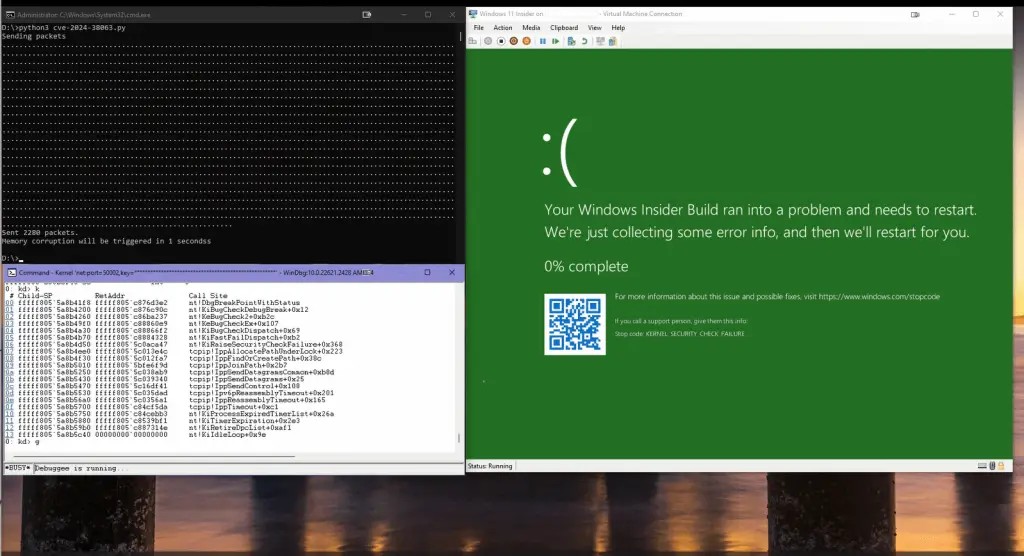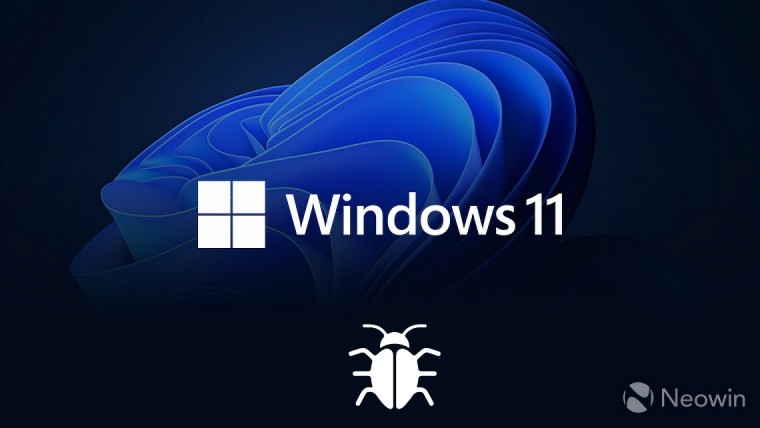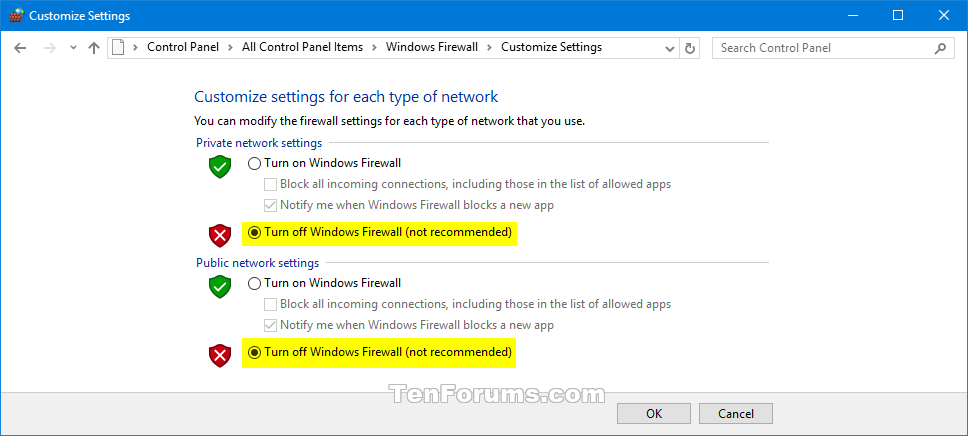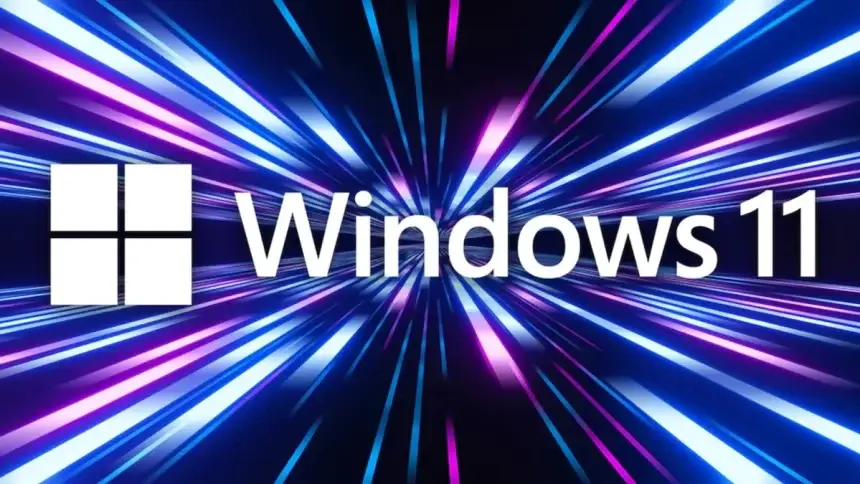Windows 11, Microsoft’s latest operating system, was recently targeted by cybercriminals exploiting a critical vulnerability in its TCP/IP stack. This bug, which allows Remote Code Execution (RCE), raises serious concerns about the security of the operating system that many believed to be the most secure version of Windows. The news that “Windows 11 got hacked” through this TCP/IP RCE bug has shaken users and IT administrators alike. In this article, we will discuss the specifics of this vulnerability, the potential damage it can cause, and how users can protect themselves from future exploits.
Understanding the TCP/IP RCE Bug in Windows 11
The TCP/IP (Transmission Control Protocol/Internet Protocol) stack is the backbone of how computers communicate over the internet. It’s responsible for ensuring that data sent from one machine reaches another correctly and securely. However, in Windows 11, a vulnerability in this stack has been discovered that allows attackers to remotely execute code on the target machine, leading to complete system compromise.

The TCP/IP RCE vulnerability allows hackers to bypass security protocols and gain control over a system remotely. Once exploited, this bug could let attackers install malware, steal sensitive data, or manipulate system files without any user interaction. This type of attack is particularly dangerous because it can spread quickly across networks, affecting many devices simultaneously.
How the Windows 11 TCP/IP Bug Was Exploited
The Windows 11 TCP/IP RCE bug was part of a wider vulnerability affecting several versions of Windows, but it was most prominently exploited on Windows 11 systems due to its high adoption rates among home users and enterprises. Hackers took advantage of this flaw by sending specially crafted packets over the internet that exploit weaknesses in how Windows 11 handles certain network traffic.
Cybercriminals have been using techniques like buffer overflow or input validation errors to inject malicious code into the vulnerable TCP/IP stack. Once the malicious packet is sent, it manipulates the system’s memory, allowing the attacker to run arbitrary code with the same privileges as the user or even the system.

Impact of the Windows 11 TCP/IP RCE Bug
The impact of this vulnerability cannot be understated. Remote Code Execution (RCE) bugs are among the most severe vulnerabilities that can be found in an operating system, as they allow attackers to take full control of a machine. If exploited, the TCP/IP RCE bug could:
- Steal Sensitive Data: Hackers can access confidential data, including login credentials, personal files, and financial information.
- Install Malware: Ransomware, spyware, and other forms of malware could be installed on the affected system, leading to data loss or theft.
- Compromise Network Security: If a compromised machine is part of a larger network, the attack could spread, infecting other devices.
- Disrupt Business Operations: In enterprise environments, this bug could lead to downtime, lost revenue, and damage to a company’s reputation.
Microsoft’s Response to the Windows 11 Hack
Once the vulnerability was disclosed, Microsoft quickly responded by issuing patches as part of their regular security updates. These updates are essential to protect users from potential exploitation of the TCP/IP RCE bug. Microsoft acknowledged the severity of the issue, ranking the bug as “critical” due to the widespread damage it could cause if left unpatched.

Users and administrators are strongly advised to update their systems immediately to mitigate the risk of attacks. However, not everyone updates their systems in a timely manner, leaving millions of machines potentially vulnerable to this exploit. This is why the news that “Windows 11 got hacked” should serve as a wake-up call for users to prioritize security updates.
Protecting Your System from TCP/IP RCE Vulnerabilities
While Microsoft has issued patches for the TCP/IP RCE bug, there are additional steps users and IT administrators can take to secure their systems. These measures help minimize the risks associated with similar vulnerabilities and improve overall security.
1. Regularly Update Your Operating System
One of the most important steps is ensuring that your operating system is up to date. Microsoft regularly releases patches for known vulnerabilities, and by keeping your system current, you reduce the risk of exposure to newly discovered exploits.
2. Enable Windows Defender Firewall
Windows Defender Firewall can help block malicious traffic and prevent unauthorized access to your machine. It works by filtering incoming and outgoing network connections, allowing only trusted connections to communicate with your device.

3. Use a Reputable Antivirus Program
An antivirus program can detect and block malicious software that attempts to exploit vulnerabilities in your system. It’s essential to choose a security solution that offers real-time protection and regularly updates its virus definitions to stay ahead of new threats.
4. Disable Unused Services
Disabling unnecessary services that interact with the network can minimize your attack surface. For example, if you don’t need certain network protocols or remote services, turning them off can reduce the risk of exploitation.
5. Regular Backups
In the event that your system is compromised, having a recent backup of your important data ensures that you can restore your system without losing valuable information. Store your backups in a secure location, either on a separate device or in the cloud.
6. Network Segmentation
In enterprise environments, segmenting your network can limit the spread of malware or ransomware. By isolating sensitive data and critical systems on separate networks, you can contain an attack and prevent it from reaching other parts of your infrastructure.
How the Windows 11 TCP/IP RCE Bug Affects Cybersecurity
The discovery of the TCP/IP RCE bug in Windows 11 has far-reaching implications for the cybersecurity landscape. It highlights the importance of vigilance in system administration and the need for robust security measures at every level. As Windows 11 adoption grows, it will likely become an even bigger target for cybercriminals. Organizations and individuals alike must prioritize security to protect against these evolving threats.

Cybersecurity experts have long warned about the risks associated with zero-day vulnerabilities, like the one exploited in the Windows 11 TCP/IP RCE bug. These vulnerabilities are particularly dangerous because they are unknown to the software vendor at the time of the attack. This means that hackers can exploit the flaw before any patches or protections are put in place. The impact of zero-day vulnerabilities can be devastating, and the TCP/IP bug serves as a reminder of the importance of proactive security measures.
Conclusion
The news that “Windows 11 got hacked” due to the TCP/IP RCE bug serves as a stark reminder of the importance of cybersecurity in today’s interconnected world. While Microsoft has issued patches to address this critical vulnerability, users must remain vigilant by keeping their systems updated, enabling security features, and practicing good cybersecurity hygiene.
Understanding the nature of the TCP/IP RCE bug, how it was exploited, and its potential consequences can help users and IT professionals take the necessary steps to protect their systems from future attacks. The future of cybersecurity will depend on our collective ability to stay ahead of emerging threats and prioritize the security of our digital infrastructure.
FAQs
What is the TCP/IP RCE bug in Windows 11?
The TCP/IP RCE bug in Windows 11 is a vulnerability in the operating system’s network stack that allows hackers to execute code remotely and take control of a machine.
How did hackers exploit the TCP/IP RCE bug in Windows 11?
Hackers exploited the bug by sending specially crafted network packets that exploit flaws in the TCP/IP stack, allowing them to run arbitrary code on the target machine.
Has Microsoft released a patch for the TCP/IP RCE bug?
Yes, Microsoft has released patches to address the TCP/IP RCE vulnerability. Users are encouraged to update their systems immediately to protect against potential attacks.
What are the risks associated with the TCP/IP RCE bug?
The risks include data theft, malware installation, network compromise, and system hijacking, potentially affecting both individual users and enterprises.
How can I protect my system from the TCP/IP RCE bug?
To protect your system, ensure that your operating system is up to date, use a firewall, employ antivirus software, disable unused services, and back up your data regularly.
Is Windows 11 still safe to use after the TCP/IP bug was discovered?
Yes, as long as users keep their systems updated with the latest patches and follow good cybersecurity practices, Windows 11 remains safe to use.



